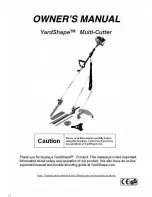
7
V-VERB PRO REV2496
1.3 Digital reverberationthen and now
Simulated reverberation has certainly come a long way over
the past five decades
. A necessity to be able to create a first-
class reverb effect became apparent early on, particularly in
recording studios. To get a step closer to this goal, all kinds of
technological approaches were tried. In the 50s and 60s, the
landscape of recording studios was dominated by special
(physical) reverb chambers, reverb plates and classical spring
reverbs. But the world of artificial reverberation could undergo a
revolution only with the advent of digital technology. The possibility
to influence the reverberation period and frequency response
of an artificially created sound gave sound engineers the kind of
freedom that people could previously only dream of. As the
prices of digital reverbs gradually started to decline, such
equipment was for the first time within the financial reach of a
large cross-section of musicians (and not just big recording
studios and broadcasters). Still, one cannot deny the existence
of a substantial quality difference between professional
equipment and the so-called consumer equipment. Even today,
only a handful of reverb processors on the market can truly
impress the most discerning listeners. It was often the case that
the disadvantages of different units were not apparent until a
direct comparison was performed.
1.4 Digital reverb modeling
The development of the V-VERB PRO started about six years
ago. We started by developing many different algorithms,
evaluating them in a multitude of listening tests. Early in this
process, a large variety of building blocks for reverberation
algorithms was created, letting us later use these building blocks
to model realistic acoustic environments (i.e. to create them
virtually). But that was not enough: simulations of well-known
studio standards were now also possible. Even though many
vintage digital reverbs are currently becoming popular again,
professional studios nowadays mainly use two different kinds
of reverberation:
1. Natural-sounding reverberation
Reverb classics that are used in the worlds top studios belong
to this family. Instead of modeling room impressions, special
algorithms are created that simulate the sound of complete
acoustic environments. The result are very smooth and warm
reverb tails with deep room impressions, ideally suited for making
music.
2. Reverbs that simulate realistic room impressions
A new family of reverb processors that have been programmed
to replicate real acoustic spaces has established itself in recent
times. Unlike with the classic reverb design philosophy, this family
of reverbs approaches the task of acoustic space replication by
dividing the dynamic behavior of impulses into two basic elements,
namely into two different processor blocks:
1.
An Early Reflections Generator creates the first component
of the impulse response for a variety of acoustic spaces.
2.
A second generator creates the late reverb tail and allows
adjusting decay times in up to four different frequency
bands.
We started the development of the V-VERB PRO with the
intention at combining the best of these two worlds. In doing
that, it was very important to us to implement both concepts for
creating room impressions. What ended up being produced is
our new reverb modeling technology that allows us to accurately
recreate all types of reverberation. This process consists of
both mainstream and new methods.
Regardless of which design philosophy you personally prefer,
the V-VERB PRO gives you a choice: both warm, prominent
reverb effects with a natural sound as well as realistic
roominess, whose impact can be defined to the most minute
detail.
From day one it was always our goal to program such reverb
effects that would make everything else seem simply second-
class. By implementing an extremely powerful signal processor
operating internally at 88.2/96 kHz, we succeeded at noticeably
improving the resolution and transparency. High processing
power and an efficient processor operation allow for computing
extremely complex room models. The floating point calculation,
unique in this price segment, creates dynamics that guarantee
low distortion and ultra-transparent fade-outs of late reverb
phases. We are particularly proud that the V-VERB PRO is the
first of its kind to succeed in creating and combining early and
late reverberations in completely new and original ways. By
utilizing innovative reverb modeling, we are now able to create
such naturally-sounding room impressions that were previously
possible only in physical, real spaces.
2. CONTROL ELEMENTS AND
CONNECTIONS
In this chapter we will describe the different control elements
of your V-VERB PRO. All controls and connections are described
in detail, and youll also get useful advice about how to use them.
2.1 The front
Controlling your REV2496 is menu-driven. This means that
some control elements have different functions depending on
the menu in which you are currently working. This reduces the
number of keys and controls necessary to operate your
REV2496, so the control panel is very clearly arranged. The
large LCD always clearly indicates the current function assigned
to a particular control element.
Fig. 2.1: Display section of the REV2496
The
LED
meter indicates the REV2496s input signal. The
red CLIP LED illuminates as soon as the input signal level
is too high, indicating the possibility of audible distortion.
The display shows all the menus necessary for controlling
your REV2496. The function that is assigned to controls
EDIT A - EDIT D (
) is indicated beneath the LCD and
depends on the menu you are in.
The
MIDI IN
LED
indicates that MIDI data is being received.
The red
LIMITER
LED lights up if one of the peak limiters in
the output section is engaged.
These
LED
s indicate the selected sampling frequency. It
can be selected in the setup menu. The
EXTERNAL
LED
lights up if the REV2496 is being externally synchronized.
The external synchronization can be done either via the
digital audio inputs or through the Wordclock input (
).
Fig. 2.2: EDIT controls A - D
2. CONTROL ELEMENTS AND CONNECTIONS
Downloaded from








































